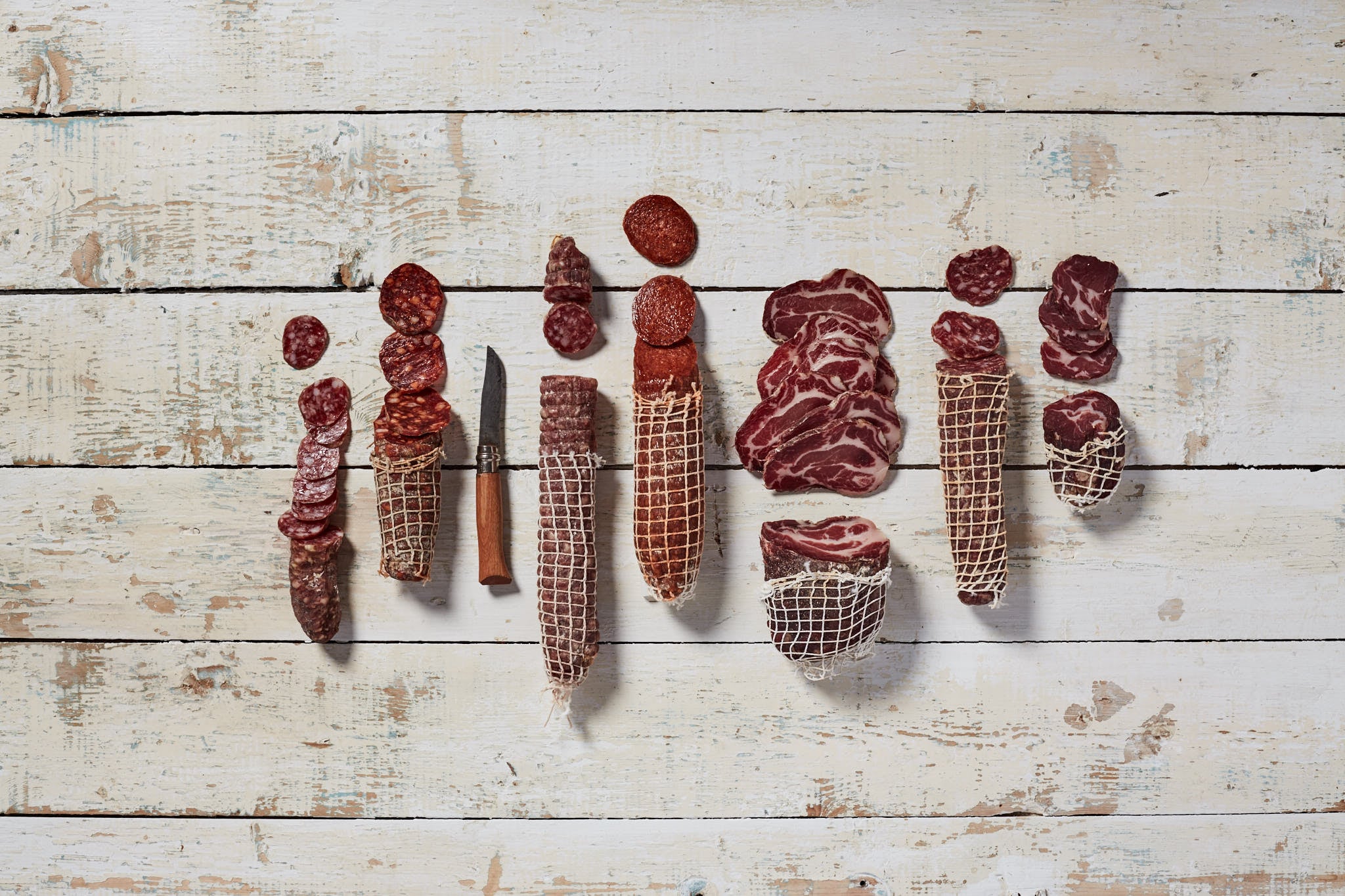As a Carnivore Club member, you are already familiar with the wide range of cured meat commercially available. But, have you ever considered making your own? Curing meat at home is a great way to experiment with different flavor varieties and make meat last for an extended shelf life.
There are a few considerations that go into making cured meat at home. First, where will you get the fresh meat you plan to cure? Second, what curing method is best based on your preferences? And finally, is there any risk of illness based on improper preparation with cured meat?
Curing refers to the procedure used to preserve the meat. There are two distinct ways to cure meat– salt and microbial. We will describe each so that you can determine which curing process will work best for you.
Salt Cures
Salt curing preserves meat by dehydrating the tissue. Osmosis draws the water out of the meat, which prevents it from spoiling. Typically, salt is mixed with sugar for a less salty cured meat. The ratio of curing salts to sugar depends on what piece of meat you are curing and is one of the key factors that determines the flavor of the meat.
The curing mixture can be applied directly to the surface of the meat for a dry rub or using a brine solution for a wet curing. Either process usually uses non-iodized sodium chloride, but sodium nitrate is often added to inhibit the growth of botulism toxin. *It is important to note that it has recently been identified as a potential carcinogen. Sodium nitrite is also used often in the curing salt process. Salting the surface directly draws water to the surface, which needs to poured off repeatedly as salt is reapplied. Brines allow deeper penetration of the curing salt mixture and characteristic flavors, but also result in a saltier tasting finished product, which often needs to be soaked to remove some of the salt before cooking or eating. This method of curing is great for sausage curing, wild game, and so many other cuts of meat.
Microbial Cures
Fermentation or microbial curing is a much more complicated curing process. As beneficial microbes digest the sugars in the meat, they produce acid/alcohol and carbon dioxide. Acid and alcohol act as preservatives and prevent the growth of pathogens.
Once the meat is prepped, it must be aged in a curing chamber. Curing chambers are dark, sterile environments, often filled with beneficial microbes. An improvised curing chamber can be made with a mini-fridge, as long as it has a temperature and humidity sensor. Depending on a wide range of factors, curing time can take anywhere between a few days to over a year to complete. The meat should be checked regularly. Some microbes will cause mold to grow on the meat. This is not always a sign of spoilage, but an unpleasant odor always means the meat has gone bad and it must be discarded immediately.
Microbial curing often takes a lifetime to master. Before trying microbial curing, it is important to do thorough research into safety procedures to prevent foodborne illness.
Food Safety
Diseases are of utmost concern when curing meat. There are two specific diseases that do not cause smell or physical change in the meat, which make them especially important to understand.
Botulism: Botulism is caused by the clostridium microbe which produces an often fatal neurotoxin. There are three reliable methods to prevent botulism: salting and dehydrating, pickling, and pressure-canning. As these methods are not always used in curing meat, sodium nitrate is the best way to prevent botulism in curing at home.
Listeria: Listeria is a bacteria that causes sepsis. Refrigeration has to be below 39 degrees F to prevent the growth of listeria. Nitrates and sterilized workspaces are the best ways to prevent listeria.
The methods and recipes for cured meat are extensive. The easiest way to get cured meats is to start with simple salt cures, but for the most adventurous chef, microbial cures are also an option. Some other cured meats processes is to do dry cured meats or brine curing. You could also do both a dry and brine cure, which would be considered combination curing. Dry curing or brine curing is going to be a longer curing method, but dry curing meat is a great, traditional route. No matter what method you select, be sure to read up about the potential food safety concerns so as to take the proper precautions. If you follow these precautions, there is nothing to worry about except for a really salty first try! So, get out there and make some cured sausage, salami, or other types of cured meats!

